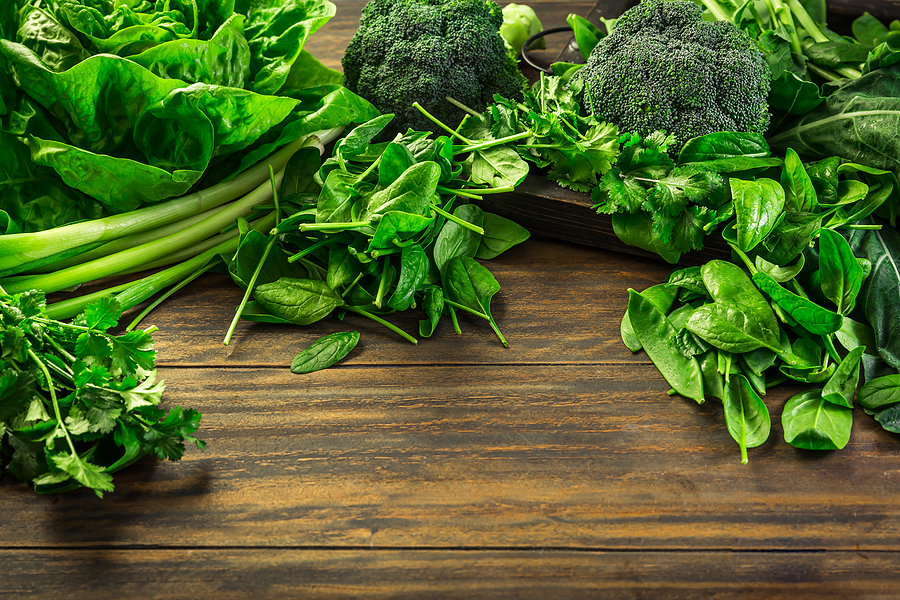
Canada’s Food Guide recommends that you eat plenty of vegetables and fruits including, dark green vegetables everyday. Read on to learn how you can include these tasty, nutritious and inexpensive foods into your daily food choices.
Buying local
Locally grown leafy greens are generally available June to October. Some leafy greens like greenhouse lettuce are available all year long. When you buy local food, you support farmers so they can keep producing high quality, affordable food we can all enjoy. Check your local farmer’s market or ask your store employee to know if your leafy greens are grown locally.
A closer look at dark leafy greens
Here is some information about some of the leafy greens that you can find in many grocery stores and local markets.
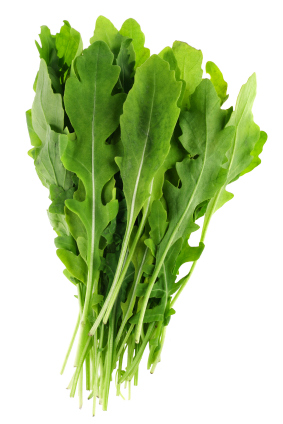 Arugula (rocket)
Arugula (rocket)
These are tender leaves with a sharp mustard or peppery flavor and usually tossed with other lettuces in salads. Try it also in soups, pastas or even pizza! Look for bright green and fresh looking leaves. Store for 2-3 days in a tightly sealed bag in the refrigerator and wash very well before using. Try using arugula in any salad that calls for baby spinach or watercress or try recipes like Summer Chicken and Shrimp Pasta for Two or Potato Patties with arugula.
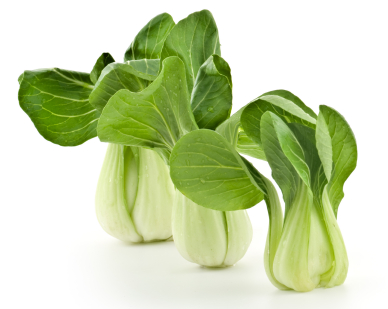 Bok choy (Chinese chard)
Bok choy (Chinese chard)
A member of the cabbage family, bok choy is tasty in stir-frys, salads, soup or as a quick side dish. Look for smooth stems and leaves that are not wilted. Wrap in plastic and keep in the bottom of the refrigerator for about a week. Try this recipe: Tofu Vegetable Soup.
 Collard greens (collards)
Collard greens (collards)
A variety of cabbage that does not form a head, but instead has long and flat leaves. They taste similar to cabbage or kale. Collards taste milder when they are cooked (they can be bitter when raw). Local collard is sometimes available in the winter or early spring. Look for crisp, green leaves without any yellow. Store in the refrigerator wrapped in plastic for 4-5 days. Try in stir-frys, soups or any way that you would prepare cabbage or spinach. Try using collards instead of cabbage in this recipe: Bean-Stuffed Cabbage Rolls.
 Dandelion greens
Dandelion greens
This grows wild and commercially. They have bright-green jagged leaves that are slightly bitter. Older dandelion greens should be cooked; younger ones can be cooked or served raw as a salad green. Keep 1-2 days in the refrigerator wrapped in plastic. You can substitute them for any recipe that calls for kale, collards, Swiss chard, spinach and rapini. Try them in this recipe: Broccoli, Kale and Lentil Soup.
Did you know? You can eat wild dandelion greens – just be sure that they are free of pesticides.
 Kale
Kale
A member of the cabbage family with long, curly leaves. Remove the tough center stalks before cooking. Prepare the same way you would spinach. It’s good in salads, omelets, pastas, stir-frys and soups. You can also use it raw in salads. Look for small bunches with no limp or yellowing leaves. Store in the refrigerator wrapped in plastic for 5-7 days. Try: Crispy Kale Chips or Avocado, Kale and Quinoa Salad
 Mustard greens
Mustard greens
These leaves are a rich, dark green and have a strong mustard flavour. Try the leaves steamed or sautéed and flavoured with garlic or onion. You can eat them raw but they taste milder when cooked. Use in any dish where you would add kale or spinach. Look for crisp, young leaves and avoid those with thick, fibrous stems. Store for 1-2 days wrapped in plastic in the refrigerator. Try using mustard greens instead of kale in this Barley and Lentil Salad with Kale, Almonds and Feta.
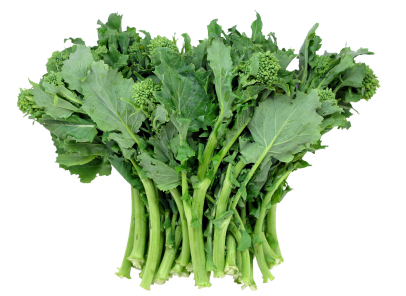 Rapini (broccoli raab)
Rapini (broccoli raab)
Looks like thin broccoli stalks with small clusters of buds and smooth leaves. It tastes bitter but cooking helps to mellow the taste. It’s very popular in Italian cooking where it is steamed, sautéed or braised. Keep for 3-5 days wrapped in plastic in the refrigerator. Try this recipe: Whole Wheat Pasta with Rapini, Grape Tomatoes and Mushrooms.
 Spinach
Spinach
Spinach is a popular choice when it comes to leafy greens. Spinach has a mild taste and can be eaten raw or cooked. Baby spinach is more tender and mild-tasting than full grown spinach. Use raw spinach in salad, as a topping for sandwiches, or even in smoothies. Cooked spinach can be added to most recipes for a nutritional boost. You can even find cubes of frozen spinach - a convenient and nutritious way to add spinach to meals. Try these recipes: Layered Top to Bottom Beet Salad, Ground Up Frog Smoothie, or Lentil Curry with Squash and Cashews.
 Swiss chard
Swiss chard
Has a mildly sweet yet slightly bitter flavor with large green (and sometimes red, orange and yellow) ribbed leaves and thick stalks. Leaves can be used in salads and both leaves and stalks can be steamed or sautéed. It is used like spinach, but requires slightly longer cooking because of its thicker texture. Store in the refrigerator wrapped in plastic for 2-3 days. Try these recipes: Hearty Manitoba Vegetable Soup or Eat Your Greens Frittata.
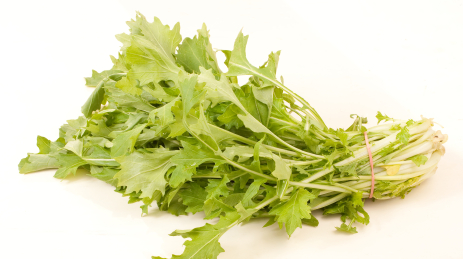 Turnip greens
Turnip greens
These are the fuzzy green leaves that are the top of the root crop. They are sweet when young (the best time to eat them raw) but get tough and strong tasting as they age. Look for crisp greens with an even colour and no yellow. Avoid those that are wilted. Remove the thick ribs before cooking. Try boiling, sautéing, steaming and stir-frying. Keep 1-2 days in the refrigerator wrapped in plastic. You can substitute them for any recipe that calls for kale, collards, Swiss chard, spinach and rapini. Try them in this recipe: Swiss Chard and Navy Bean Soup.
Nutrition spotlight
Great news about greens - they are nutrient dense! That means they are low in calories and high in nutrients.
Leafy greens have about 10-35 calories per 125 mL (1/2 cup) cooked serving. They are rich in folate, vitamin A, calcium and vitamin C. They are also high in fibre, and naturally low in fat and sodium.
Delicious and easy ways to prepare dark leafy greens
For something simple, try steaming the greens and serving with a teaspoon of olive oil drizzled over the top, balsamic vinegar and pepper. You can also stir-fry, boil or braise them. You can tell leafy greens are cooked once the greens are wilted and are bright in colour.
Good flavourings for greens are garlic, capers, ginger, chilli flakes, red or white wine vinegar, sesame seeds, lemon or maple syrup.
Here are other ways to add greens to your favourite recipes:
-
Chop kale, spinach, or Swiss chard finely and add to tomato or meat sauce.
-
Use spinach or arugula to make a pesto and use on pasta, chicken or pizza.
-
Add chopped greens to a stir-fry near the end of the cooking time. Cook until they are wilted but still bright green.
-
Add fresh or frozen chopped greens to vegetable soups, curries, stews or chilli.
-
Fold cooked greens into an omelette or frittata.
-
Skip the iceberg lettuce in your salads and sandwiches and try arugula, baby spinach, mesclun mix, watercress or baby mustard greens.
Did you know? Dark leafy greens contain chemicals that discourage animals from eating them. It’s those chemicals that make greens bitter.
How can a dietitian help?
Dietitians can support you throughout many phases of your life from pregnancy to eating well when you are older. Counselling sessions with a dietitian can also help you to prevent and treat health conditions like diabetes and heart disease. Your dietitian will work with you to give you personalized advice that meets your lifestyle and goals. Connect with a dietitian today!
Bottom line
There are many dark leafy greens to choose from – from arugula to turnip greens. Choose local when available. Dark leafy greens are nutrient dense and flavourful. Enjoy them raw or cooked.
You may also be interested in:
What You Need to Know About Vitamin K
Phytonutrients – Nature’s Natural Defense
Top 5 Reasons to See a Dietitian
This article was written and reviewed by dietitians from Dietitians of Canada. The advice in this article is intended as general information and should not replace advice given by your dietitian or healthcare provider.
Last Update – February 19, 2023